Embrace the flavors of Spanish cuisine with our vegan Spanish tortilla, a modern take on a beloved classic. This recipe brings together the traditional texture and taste of the original, using plant-based ingredients for a health-conscious twist. With waxy potatoes, onions, and an innovative egg replacer, this dish is both nourishing and delightful.
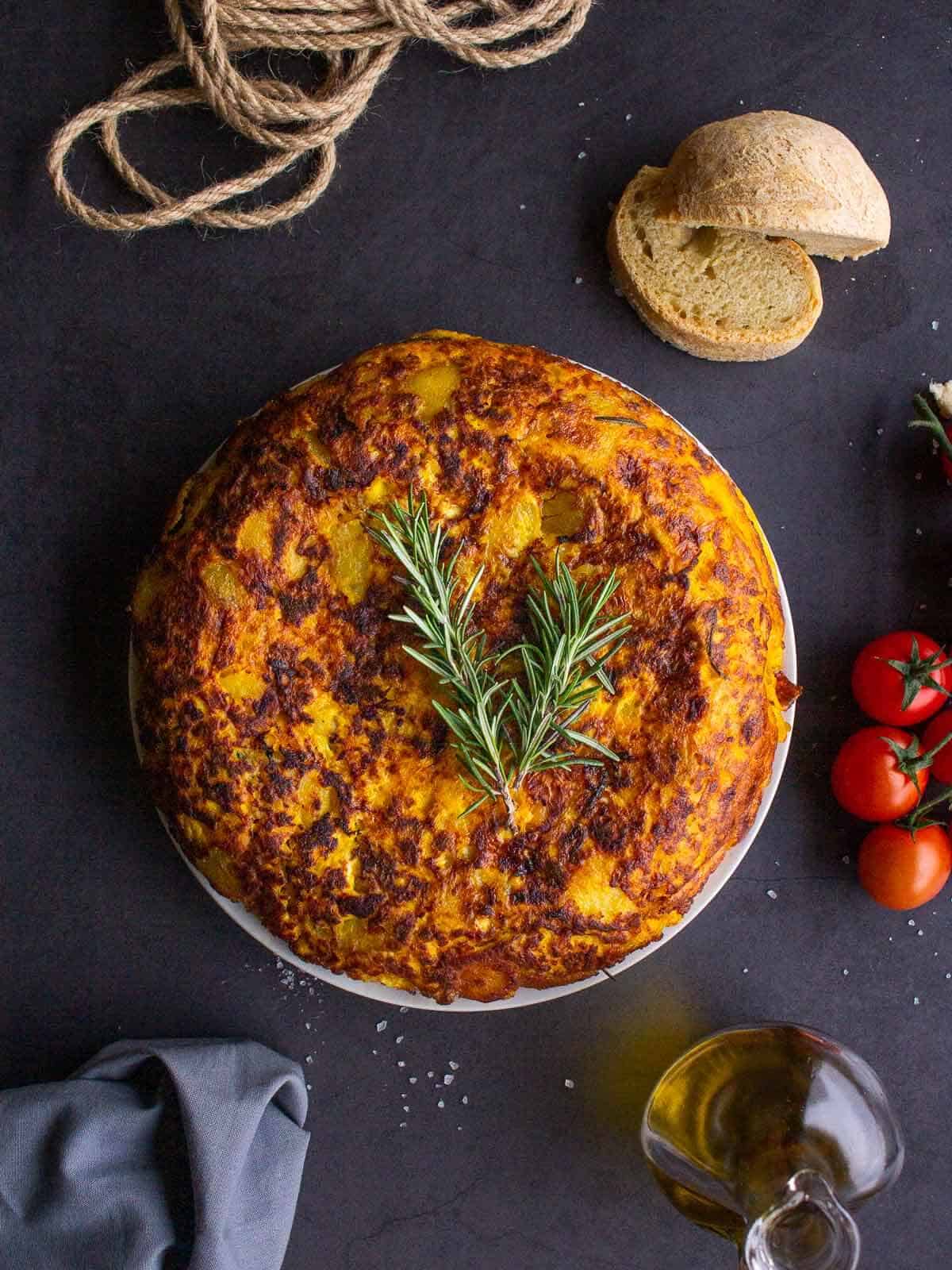
The Tortilla Española, called tortilla de patatas and some called Spanish Frittata, is very well-known; some may say it is Spain's national dish. Everybody likes it or used to like it, in case they are entirely vegan. It is one of the more commonly found tapas (appetizers), head to head with Catalonian Escalivada and Andalusian Sautéed Chickpeas with Spinach.
We have prevented it using the popular Just Egg mix.
Jump to:
💚 Why you will love it
- Health-Conscious Choice
- Rich, Authentic Flavors
- Simple Ingredients
- Easy to Prepare
- Comforting & Satisfying
🧾 Ingredients
- Egg replacer (like Just Egg mixture): Provides the binding and texture similar to traditional eggs, crucial for the omelet's structure.
- Waxy potatoes offer a creamy texture while holding their shape during cooking, perfect for the omelet's body.
- Onion: Adds a sweet, caramelized flavor that complements the earthiness of the potatoes.
- Rosemary sprig: Infuses the dish with a fragrant, herbal aroma, enhancing the overall flavor profile.
- Good quality olive oil: Ensures a rich, flavorful base for frying, contributing to the omelet's golden crust and moist interior.
- Salt and pepper: Season the dish, elevating the ingredients' natural flavors and adding depth.
See quantities and complete instructions in the recipe card.
🔪 Instructions
To make this vegan tortilla, as this recipe is traditionally called in Spain, follow these simple steps.
- Prep Ingredients: Roughly chop waxy potatoes and finely dice an onion. Season with salt (and pepper if desired) to draw out moisture.
- Drain Excess Water: After mixing, let the potatoes and onions sit, then drain the liquid using a colander or your hands.
- Fry Mixture: Heat good quality olive oil in a pan, add the potato and onion mix, and cook until tender and the edges are crispy. Toss in a rosemary sprig for aroma.
- Combine with Vegan Egg: Transfer the crispy potatoes and onions to a bowl with the vegan egg replacer. Stir to achieve a slightly thick, creamy consistency.
- Cook the Omelette: In a hot, oiled skillet, pour in the mixture, cook until halfway set, then flip and cook the other side until done.
- Serve: Carefully slide the omelet onto a plate and enjoy the warmth.
Serve with crusty bread at room temperature. We like using our Italian artisan bread and vegan aioli.
💡 Expert tips
The 3 things that I changed I have learned from Spanish friends who all agree that they also did things differently in every house in Spain, so I don’t feel that I am cheating on the traditional recipe.
The Gooey Center
We prefer a firmer Omelette. I cook it just a little more, about ¾.
So we’ve tried this ¾-cooked version for a few years, and it always delivers as much flavor as the original one.
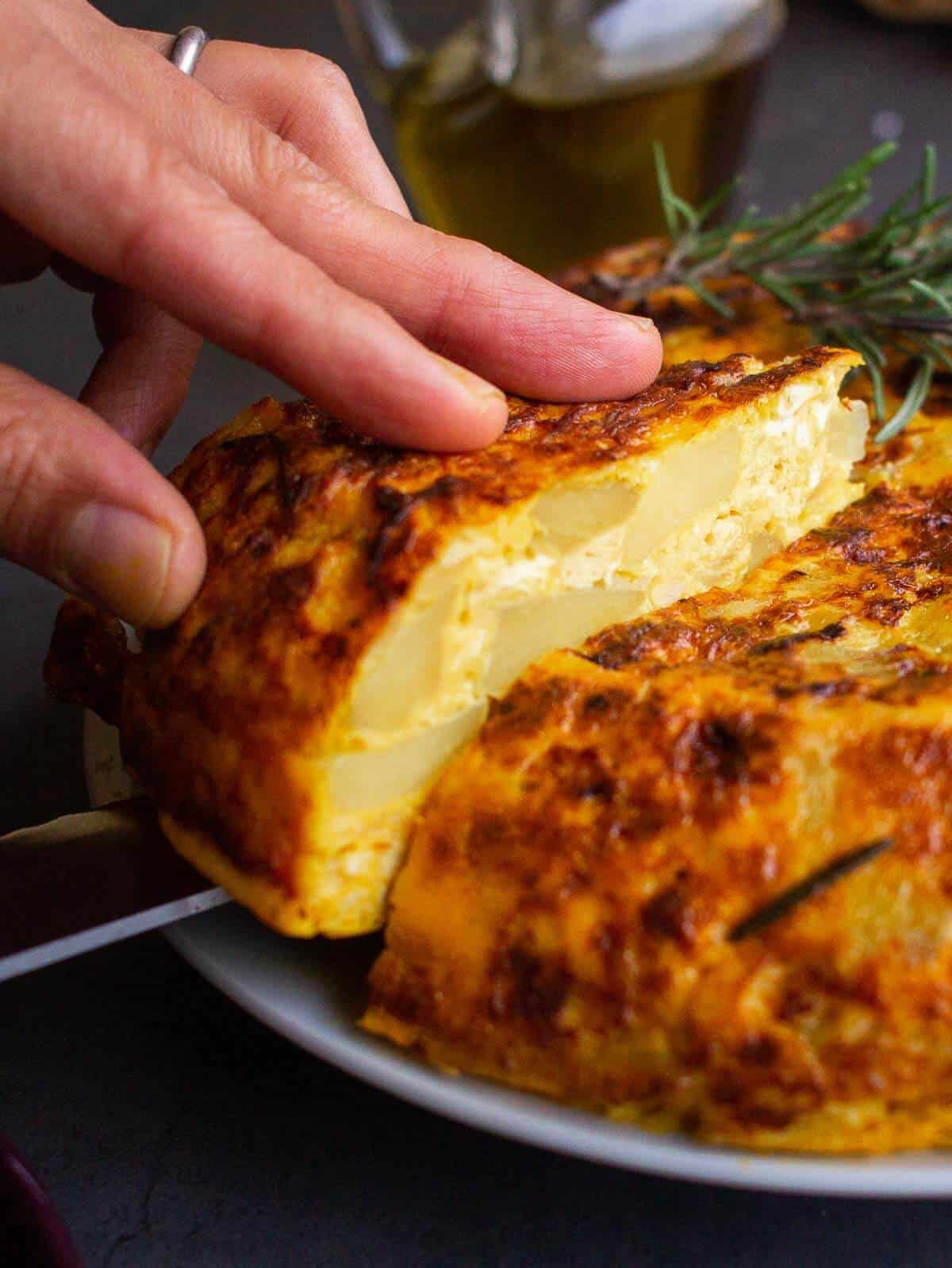
Using Onions
A simple reason here. I feel onions provide an extra punch to the flavor we all may agree with. The key here is not to overdo the quantity. You want an oniony taste, not an onion omelette.
Rosemary
Add rosemary to the frying oil. I think this extra herbal note makes it outstanding and memorable. It is the secret to making your Tortilla Española Your signature. The delicate flavor it adds to the dish makes this version.
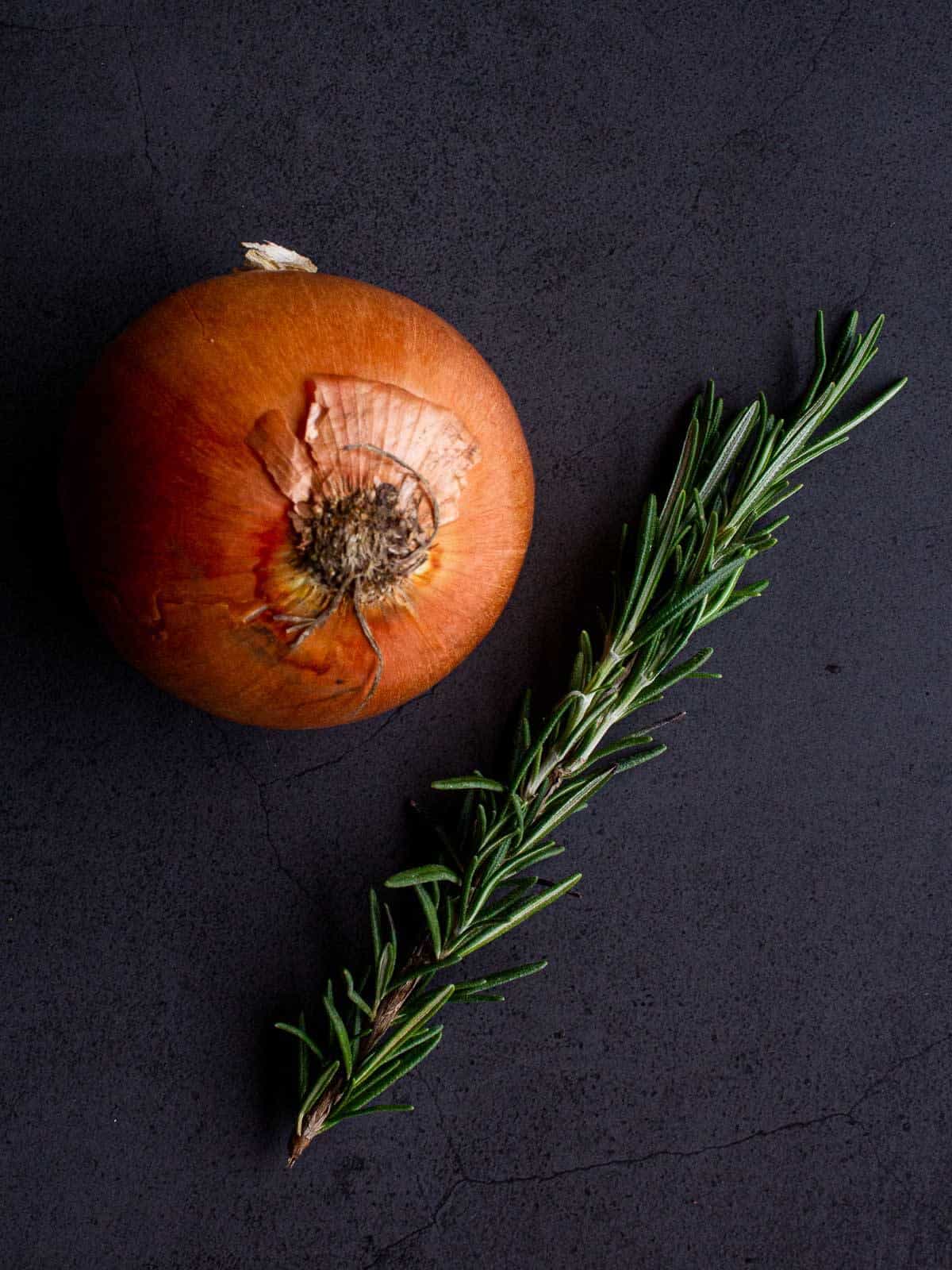
🤔 What makes a great Spanish Tortilla
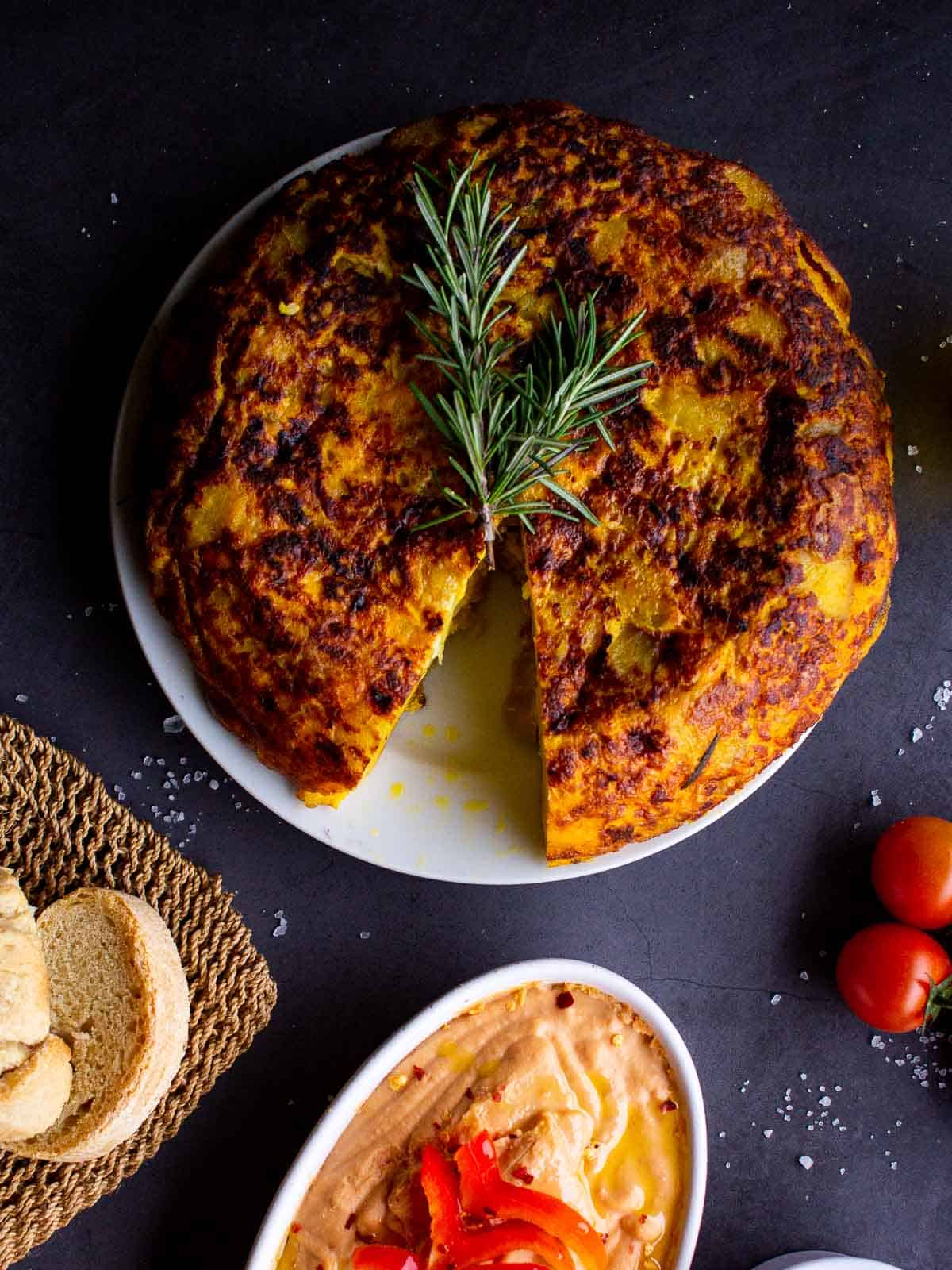
- A Spanish tortilla has to be gooey at its core.
- It is not supposed to include onions in its more basic version.
- This Spanish dish has to be made with extra virgin olive oil.
I took the liberty to make these three minimal variations to the traditional recipe, which have made my guests crazy over the years. In my opinion, this version is truly a winner!
❓ FAQ
Waxy potatoes are recommended for their ability to hold shape and creamy texture, but you can experiment with other types if preferred.
While we suggest using Just Egg mixture for its texture and flavor, feel free to use any egg replacer that suits your dietary needs and taste preferences.
Absolutely! Feel free to incorporate additional veggies like spinach, bell peppers, or mushrooms for extra flavor and nutrition. Just make sure to adjust the quantities of the other ingredients so the taste and texture remain unchanged.
🥡 Storage
In the Fridge:
- Allow the omelette to cool to room temperature before transferring it to an airtight container.
- Store in the refrigerator for up to 3 days.
- To reheat, place slices on a microwave-safe plate and heat for 1-2 minutes or until warmed through. Alternatively, reheat in a skillet over medium heat until hot.
Freezing and Reheating:
- Slice the cooled omelette into portions and wrap each piece tightly in plastic wrap, then place in a freezer bag.
- Freeze for up to 2 months for optimal taste.
- To reheat, thaw overnight in the refrigerator and follow the reheating instructions for a refrigerated omelet. For a quicker option, microwave straight from frozen for 2-3 minutes, checking and flipping halfway through.
🍷 Wine Pairing
- France - Red - Grenache Blend - Gigondas (South of Rhone)
- Spain - Dry Sherry - Palo Cortado
⭐ If you try this recipe, let us know! 💬 Leave a comment, rate it, and don't forget to tag us @ourplantbasedworld on Instagram. Cheers!
📋 Recipe

Vegan Spanish tortilla
Equipment
Ingredients
- 12 oz just egg or your favorite egg replacer
- 5 waxy potatoes medium
- 1 onion medium
- 1 tablespoon salt fine
- 1 rosemary
- 40 ounces extra virgin olive oil
Directions
Prepare the Potatoes and Onion:
- Wash and Prep: Begin by washing, cleaning, and peeling your potatoes. Then, roughly chop them into pieces with uneven edges to enhance texture. This should take about five minutes.
- Dice and Season: Next, finely chop the onion and combine it with the potato pieces in a large mixing bowl. Season with salt to taste (adding onion is optional but recommended for flavor). Salting early ensures the potatoes and onions are well-seasoned and helps them release any excess water.
- Drain: Use a colander or your hands to gently press and tilt the bowl, draining the released liquid. The salt encourages the potatoes and onions to "sweat" out their moisture, making them ready for frying without splattering.
Fry the Potato and Onion Mix:
- Heat Oil: Warm a generous amount of olive oil in a pan over medium heat. The oil should be hot but not smoking to prevent burning the onions. Test the oil temperature with a small piece of potato.
- Cook: Add the potato and onion mixture to the hot oil, stirring continuously to prevent sticking and ensure even cooking.
- Crisp the Edges: Increase the heat to medium-high. Continue cooking until the potatoes are tender and the edges start to crisp up slightly. Add a sprig of rosemary for aroma.
Combine with Vegan Egg:
- Prepare Vegan Egg: In a large, heat-proof bowl, pour the vegan egg substitute but do not mix yet.
- Mix with Potatoes: Once the potatoes are golden and slightly crispy, remove them from the oil, letting excess oil drip off, and add them to the bowl with the vegan egg mixture. Stir gently. The heat will start to cook the vegan egg, aiming for a creamy and slightly thick consistency. Add an additional 6-8 tablespoons of vegan egg mixture if needed.
Cook the Omelette:
- Skillet: Heat 4-5 tablespoons of the previously used oil in a skillet over high heat.
- Form the Omelette: Carefully pour the potato and vegan egg mixture into the skillet, leaving the rosemary behind. Allow the bottom to form a crust, loosening the edges with a spatula.
- Flip: Once halfway set, place a plate over the skillet and carefully flip the omelette onto the plate, then slide it back into the skillet to cook the other side for 2-3 minutes on low heat.
- Serve: Transfer the omelette to a serving plate. Enjoy your vegan Spanish omelette warm.
Notes
- France - Red - Grenache Blend - Gigondas (South of Rhone)
- Spain - Dry Sherry - Palo Cortado
Nutrition Facts
Nutritional Disclaimer
The information shown is an estimate provided by an online nutrition calculator. It should not be considered a substitute for a professional nutritionist's advice. See our full Nutritional Disclosure here.
Affiliate Disclaimer
Please note that some of the links here are affiliate links, and I will earn a commission if you purchase through those links. I recommend all of the products listed because they are companies I have found helpful and trustworthy.
As the lead content writer and recipe developer at Our Plant-Based World, he combines his passion for health and sustainability with a Plant-Based Nutrition Certification to create accessible, delicious vegan recipes. His expertise in plant-based cooking supports the blog's mission of fostering a healthier, environmentally conscious lifestyle through simple and seasonal dishes. His commitment to making vegan cooking enjoyable and inclusive for everyone shines in each recipe and article.

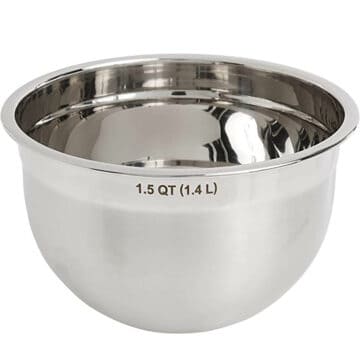
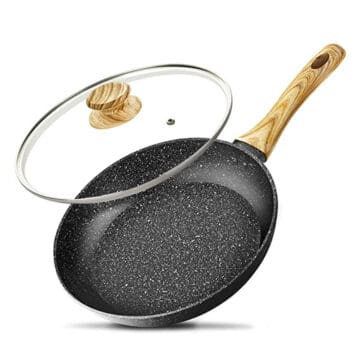

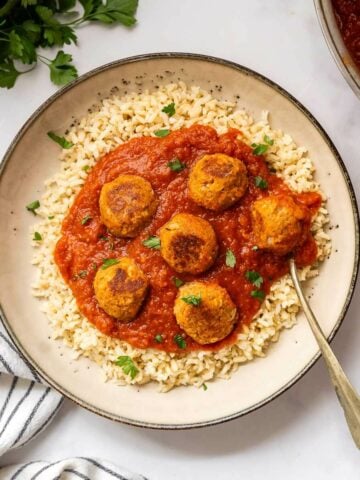
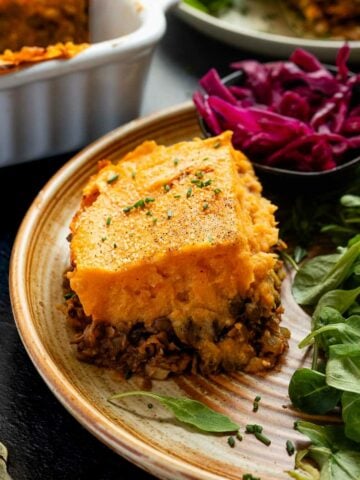


Irene Madrid
My Tia had a secret when she made the Tortilla.....she separated the yolk from the whites and beat the whites until they were very frothy before adding the mixture .
Gustavo De Obaldia
Hi Irene,
That's very interesting! Definitely something new, I hadn't heard about before! thanks for sharing!
best,
Gus
Heather
I only have had this out restaurants..so easy and delicious to make this at home! Made for a wonderful dinner with a side salad.
Gus
Spanish omelette pairs perfectly with salad, great choice! It is much easier to make than it seems, right?
Liz
This is such a great recipe with such simple and inexpensive ingredients. The potatoes and rosemary are so delicious together in this meal. My husband thinks it must be a super complicated recipe because its so good but thankfully its a breeze to make and comes out perfect every time!
Gus
Yes, that's why it is such a staple of Spanish cuisine, simple, delicious, and everyone loves a Spanish omelette!
Gina M
I have made this several times and it is always a hit! Everyone at brunch this past weekend ate it up so fast. Shared your recipe page with them so they can make and enjoy it as well!
whitney
Wow, simple ingredients and it looks gorgeous! The rosemary infused with the oil is incredible! Thanks for sharing.
Gus
I am glad you liked the rosemary twist, Whitney!
Sara Welch
Enjoyed this for dinner last night and it was a hit all around the table! Was quick and easy; my whole family loved it!